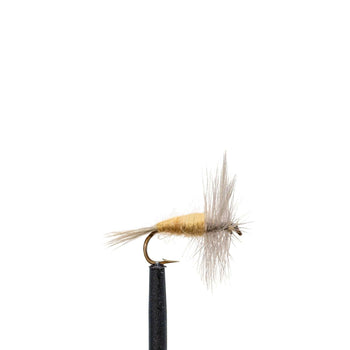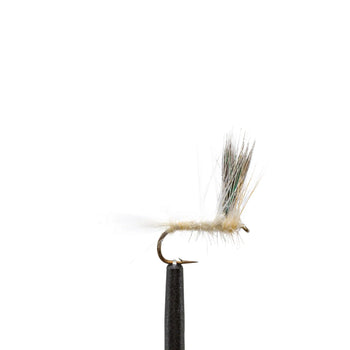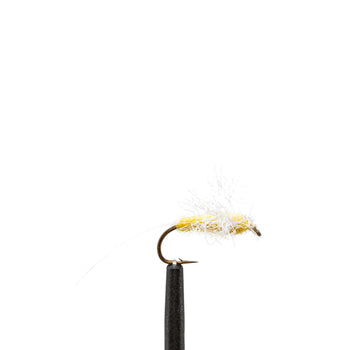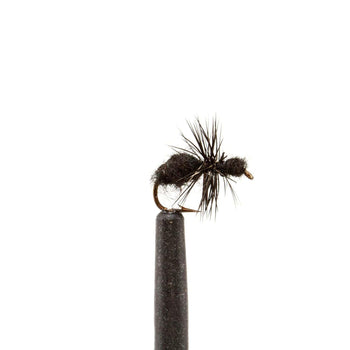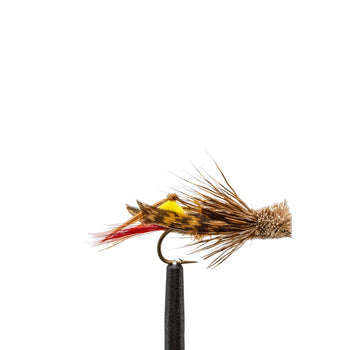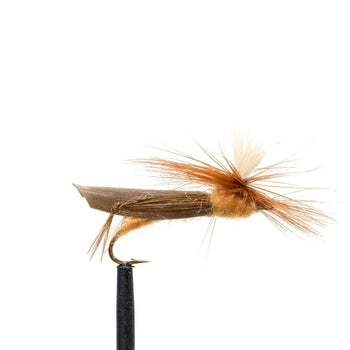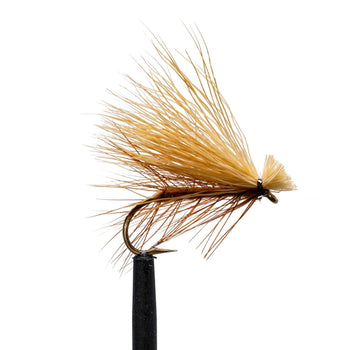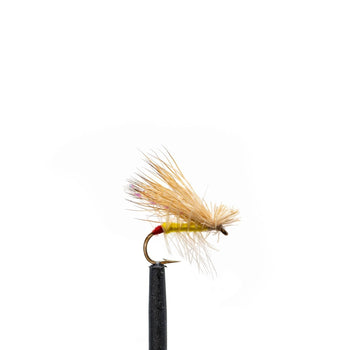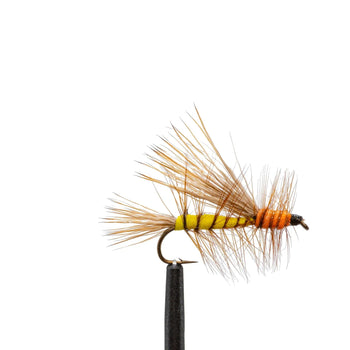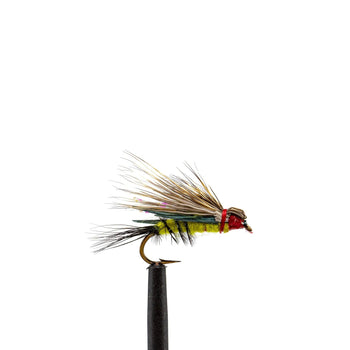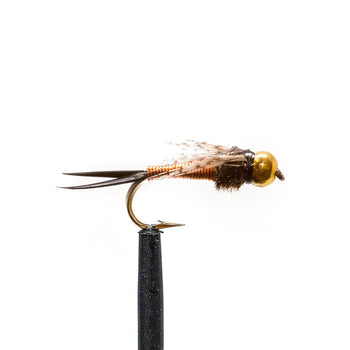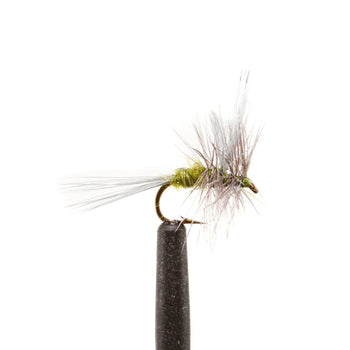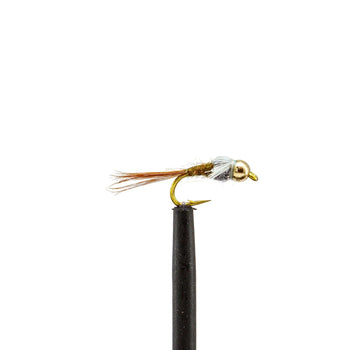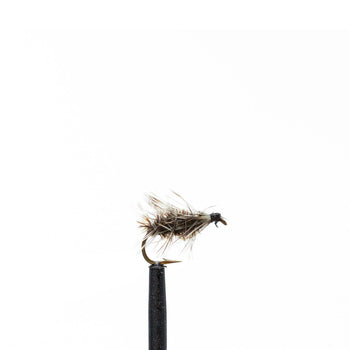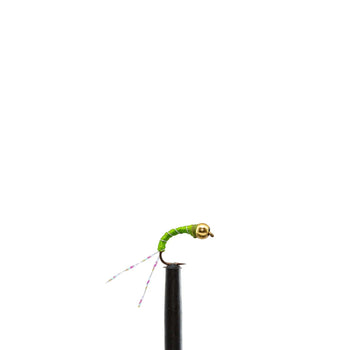Pro Tip: Don't forget to carry a few emerger patterns. Fish often key in on PMDs as they're hatching, making emergers deadly effective. Fish these patterns on a dead drift in slower runs and pools using a light tippet (5X or 6X) to ensure a natural presentation..
2. Terrestrials
While not technically a hatch, summer is prime time for terrestrial insects. Grasshoppers, ants, and beetles that accidentally find their way into streams and rivers can trigger aggressive strikes from opportunistic trout. Terrestrial fishing can be productive throughout the day, especially on windy days when more insects are blown into the water.
Tips & Techniques:
- Focus on undercut banks and overhanging vegetation where terrestrials are likely to fall.
- Don't be afraid to "slap" your fly onto the water to imitate a insect falling in.
- Twitch your fly occasionally to imitate a struggling insect.
- Use terrestrials as the top fly in a dry-dropper rig for a deadly combination.
Must-Have Patterns:
Pro Tip: Terrestrials work great as attractors in a dry-dropper rig. Pair them with a small nymph for a deadly combination. Fish terrestrials along grassy banks, under overhanging trees, and near drop-offs, using a longer leader to avoid spooking fish in clear summer waters.
3. Caddis
Caddisflies are a diverse group of insects that hatch throughout the summer months. Their erratic flight and egg-laying behavior can create exciting fishing opportunities, especially during evening hatches. Caddis patterns are versatile and can be fished in various ways to imitate different stages of the insect's lifecycle.
Tips & Techniques:
- Skitter or twitch your dry fly to imitate the natural movement of egg-laying caddis.
- Fish wet flies or soft hackles to imitate emerging pupae.
- During heavy hatches, use a double dry fly rig with different sizes or colors.
- Don't neglect deep runs – fish often feed on caddis pupae well below the surface.
Must-Have Patterns:
Pro Tip: During heavy caddis hatches, try skittering your dry fly across the surface to imitate an egg-laying adult. Fish the Elk Hair Caddis in riffles and pocket water where caddis are likely to be, adding a bit of floatant to keep the fly riding high on the water.
4. Stoneflies
While the famous Salmonfly hatch typically occurs in late spring/early summer, smaller stonefly species continue to hatch throughout the summer months. Golden Stones and Yellow Sallies can provide excellent dry fly action, while stonefly nymphs are productive year-round.
Tips & Techniques:
- Focus on faster, oxygenated water where stoneflies thrive.
- Use an upstream presentation and allow your fly to drift drag-free.
- Don't neglect the banks – adult stoneflies often fall into the water from overhanging vegetation.
- Fish stonefly nymphs deep, especially in pocket water and at the heads of pools.
Must-Have Patterns:
Pro Tip: Don't neglect the nymph stage. Stonefly nymphs are active year-round and can produce great results when fished deep. Drift the Yellow Sally near the banks and around rocks where they are commonly found, using a slight twitching motion to imitate the natural movement of the stonefly.
5. Blue-Winged Olives (BWOs)
Blue-Winged Olives, often simply called BWOs, are small mayflies that can hatch throughout the year but are particularly important during summer months. These mayflies, typically ranging from size 16-22, are known for their ability to hatch in various weather conditions, including overcast or rainy days when other insects might be less active.
Tips & Techniques:
- Pay attention to weather changes – BWOs often hatch in greater numbers during cloudy or drizzly conditions.
- Focus on slower currents and pool tailouts where BWOs are likely to gather.
- Use a reach cast or stack mend to achieve drag-free drifts in complex currents.
- Be prepared to switch between emerger, dun, and spinner patterns as the hatch progresses.
Must-Have Patterns:
Bonus: Midges
While not typically associated with summer fishing, midges can be productive year-round, especially during the early morning and late evening hours. These tiny insects (often size 18-24) can be a crucial food source when other hatches are sparse. Midge fishing can be challenging due to the small size of the flies, but it can also be incredibly rewarding when done right.
Tips & Techniques:
- Use light tippet (6X or 7X) for delicate presentations.
- Focus on slow-moving water where midges are more likely to hatch.
- Watch for subtle rise forms – fish feeding on midges often create small dimples on the surface.
- In still water, use a slow, steady retrieve to imitate a cluster of emerging midges.
Must-Have Patterns:
Pro Tip: When fish are sipping tiny insects off the surface, a small cluster midge pattern can be highly effective. This imitates a group of midges trapped in the surface film, providing a more visible target for both fish and anglers.
By including midges in your summer fly selection, you'll be prepared for those times when larger insects aren't active. Remember, on some days, these tiny flies can make the difference between getting skunked and having a successful outing.
Conclusion
While these five hatches represent some of the most common and productive summer insect activity, remember that conditions can vary greatly depending on your location and the specific waters you're fishing. It's always a good idea to check with local fly shops or guides for the most up-to-date information on current hatches.
By stocking your fly box with these essential patterns and employing the tips and techniques we've discussed, you'll be well-prepared for a variety of summer fishing situations. Remember, observation is key – take the time to study the water and the insect activity before you start fishing. Match your flies and techniques to what you see, and you'll be on your way to some incredible summer fly fishing adventures.
RELATED ARTICLES:



